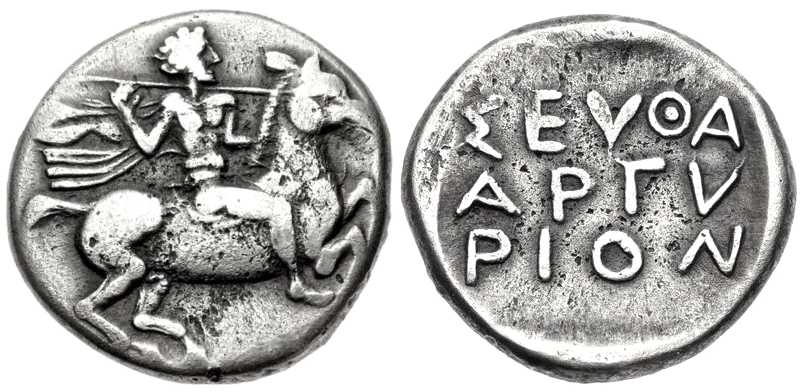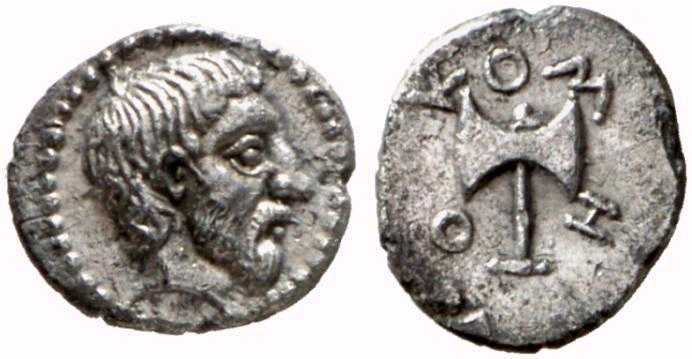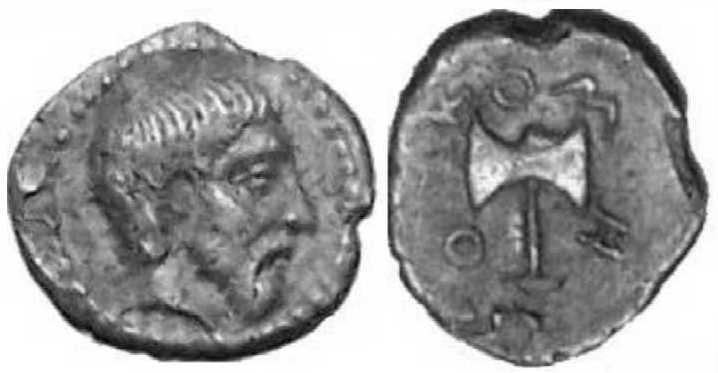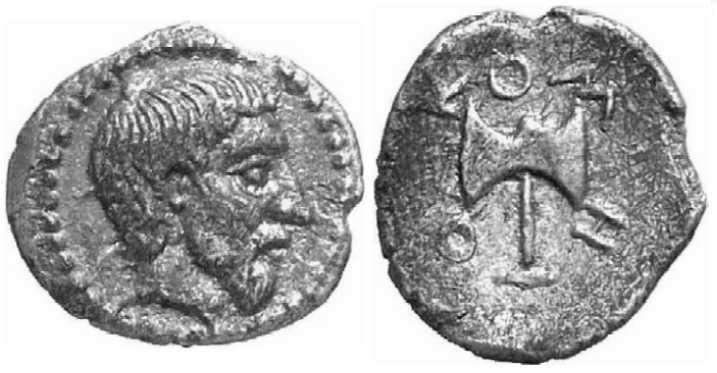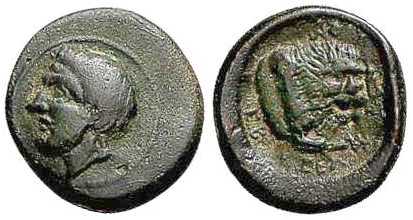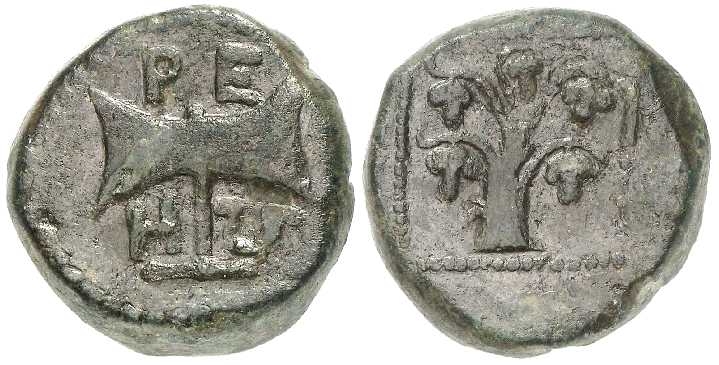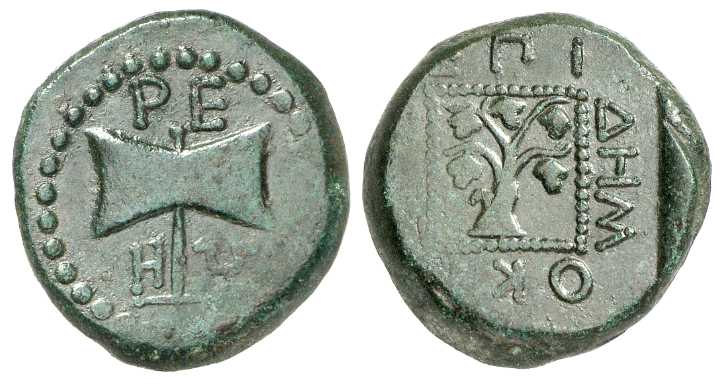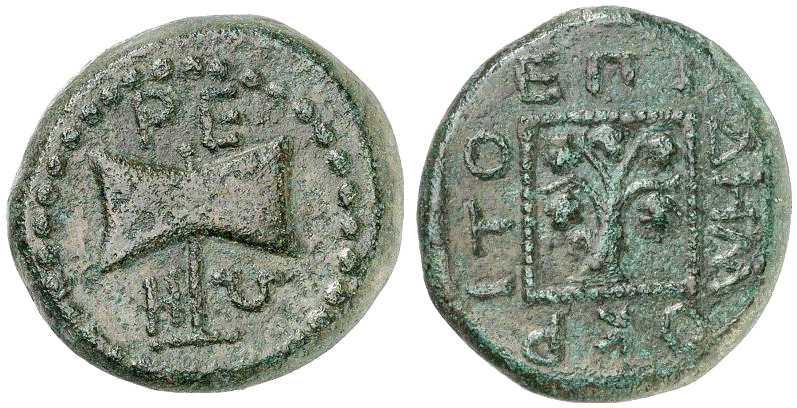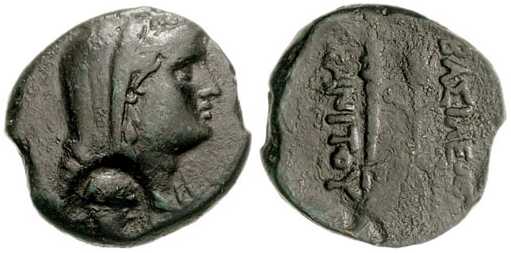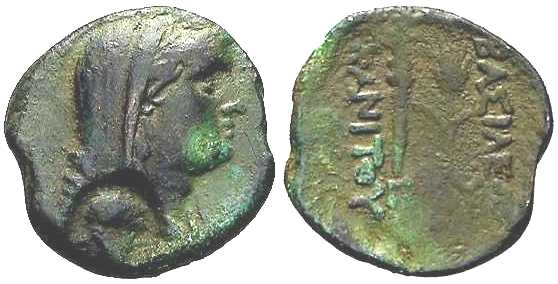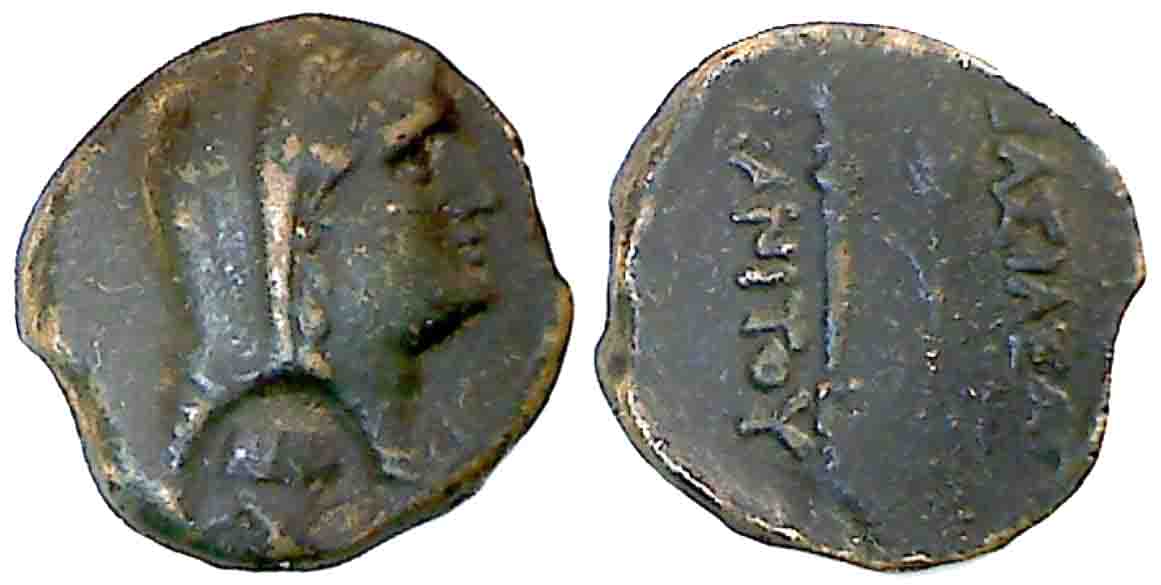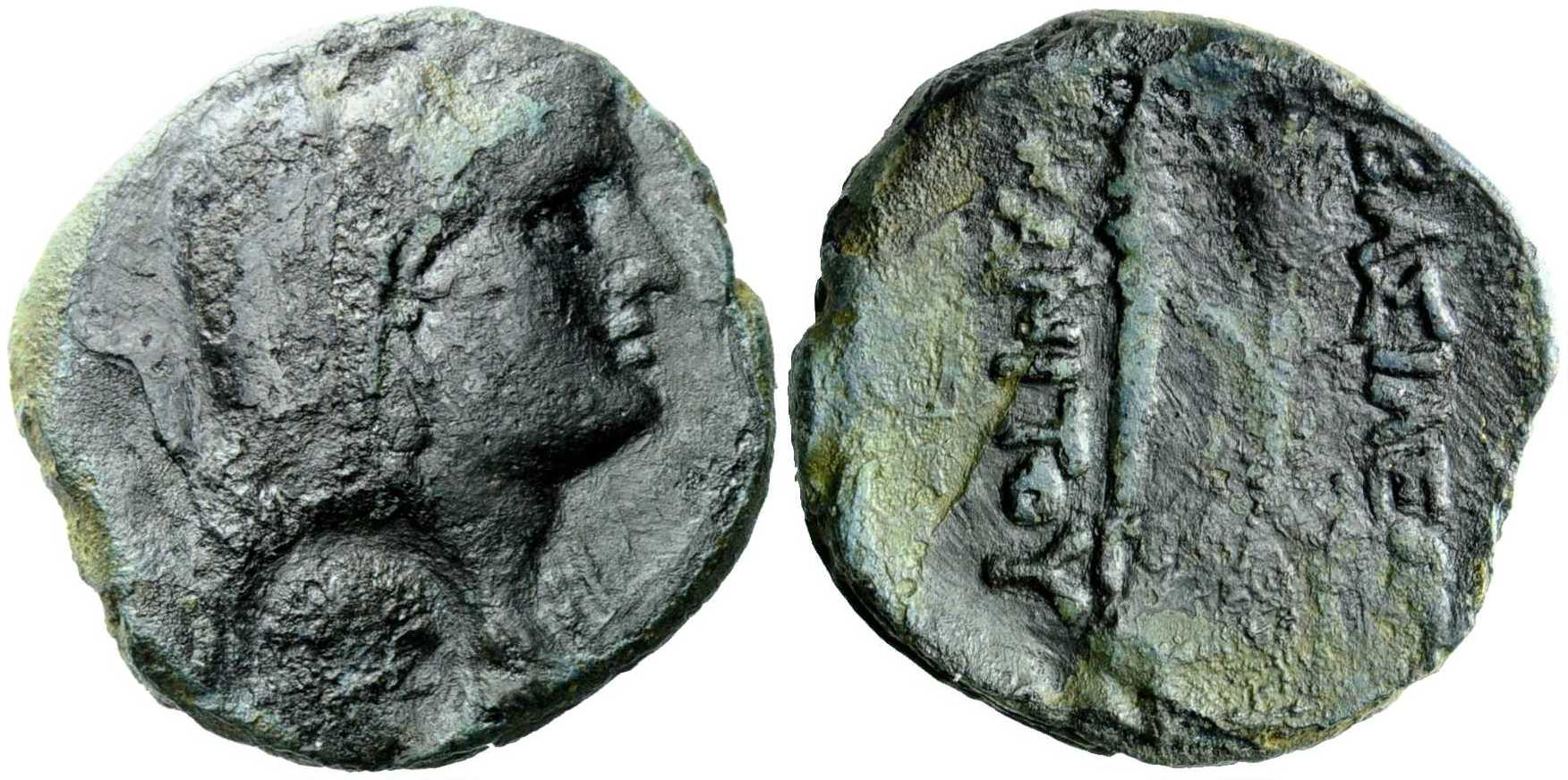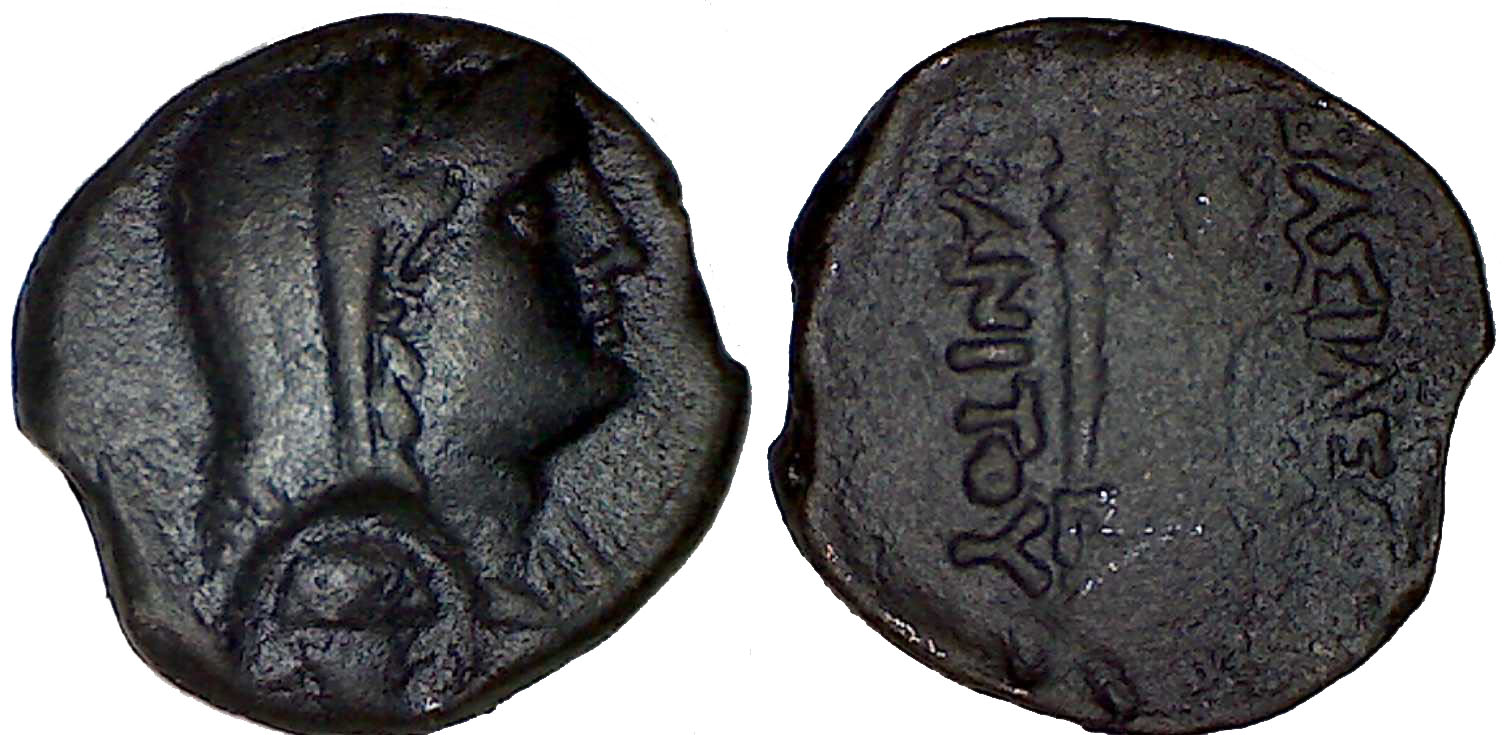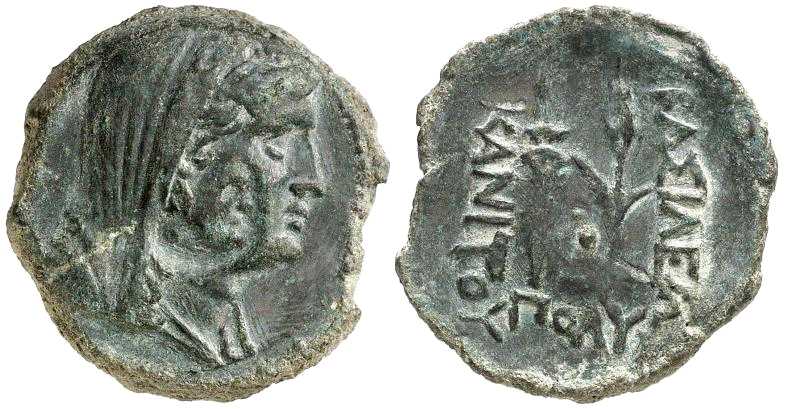In
Bulgaria a forgery industrie has developed since the 1960s or earlier.
Large quantities of antique coins have been produced and introduced
into the market. These forgeries include specimens from the Greek and
Roman times. They are either struck silver or gold copies using new
dies or silver and bronze cast coins. The majority of these imitations
in circulation consists of the latter because the casting is a
relatively simple process:
- A master form is produced by pressing a coin into
plastic material which is then allowed to solidify.
- A wax model is made by casting molten wax in the
master form.
- The wax model is embeded in heat proof ceramic
material which is then allowed to dry out.
- The wax is molten out and the final casting form is
ready.
- Molten bronze is cast into the final model.
- The ceramic model is broken away and casting
channels removed.
- The coin is patinated.
The principle permits casting simltaneously several coins
and was even used in antiquity to manufacture blanks. Today it is also
used for casting high temperature turbine blading in extremely
complicated forms and with very high precision.
Identification of cast forgeries is very difficult because the
counterfeit is a copy of a genuine antique coin and shape, as well as,
ikonography are no help. The following two methods are helpful:
- Compare Coins:
Specimens with identical shape and ikonography are forgeries. The
method requires a large database of images to be able to make this
comparison. The virtual collection of coins of the Thracian kings in
these web pages is such a data base and has helped identify forgeries.
- Analyse Material:
Modern electronic analysis techniques permit fast analysis of large
quantities of specimens. The equipment, however, is quite expensive and
not easily accesible. This method has also been used in some cases.
The following coins have been identified by one of these
methods as
modern forgeries.
|
